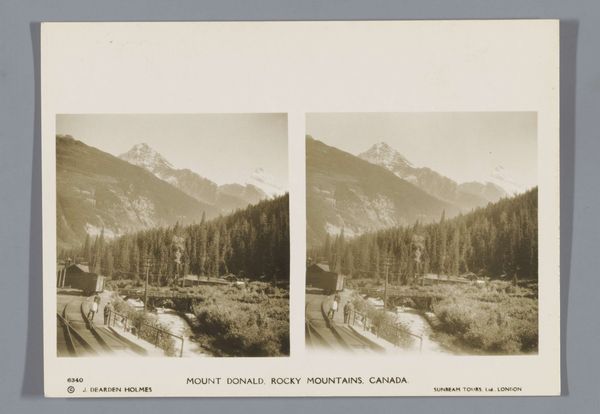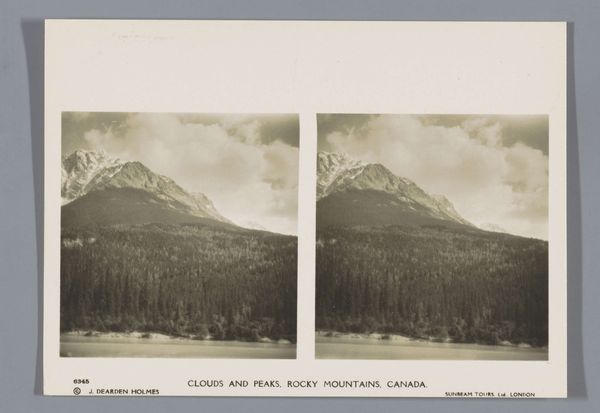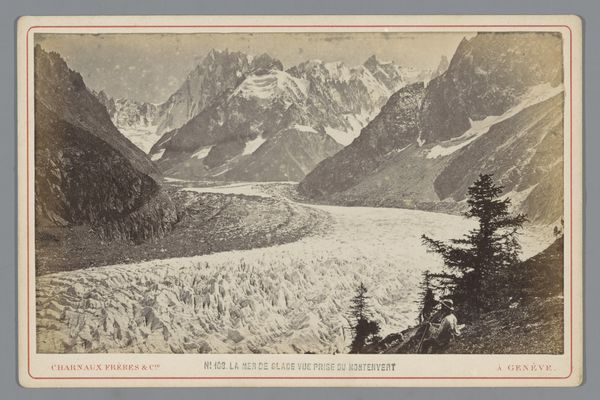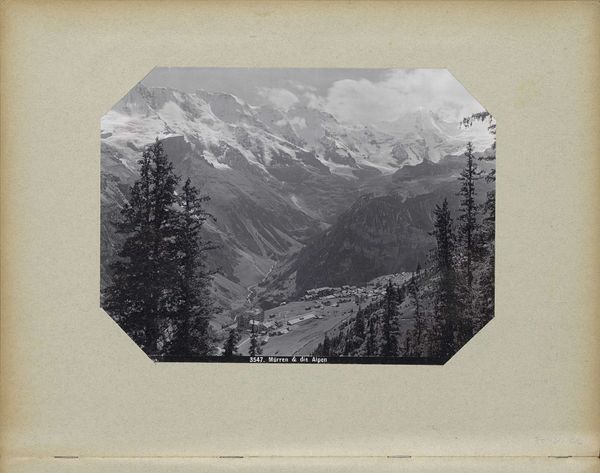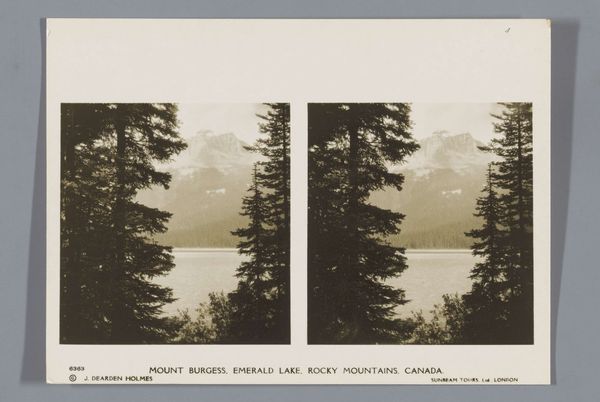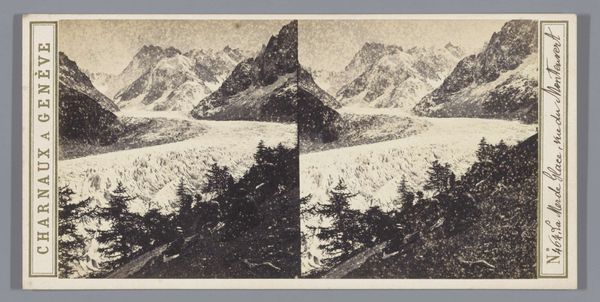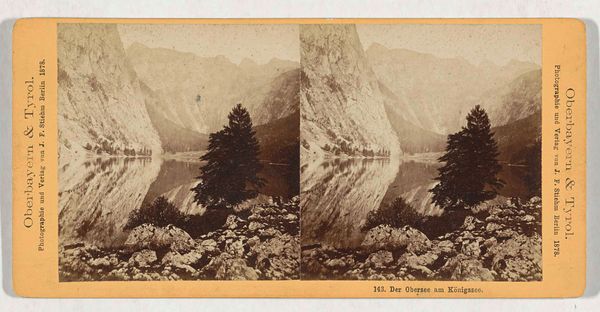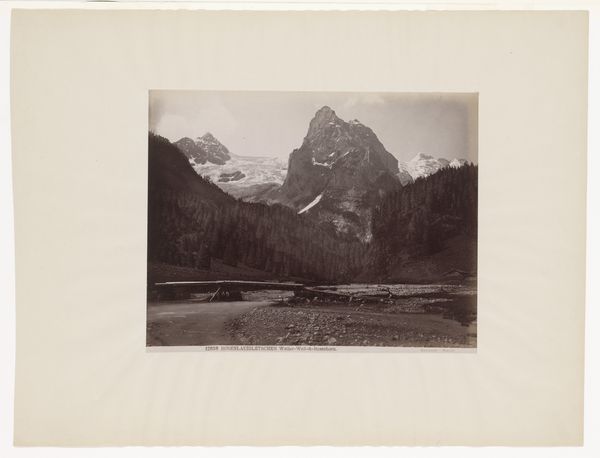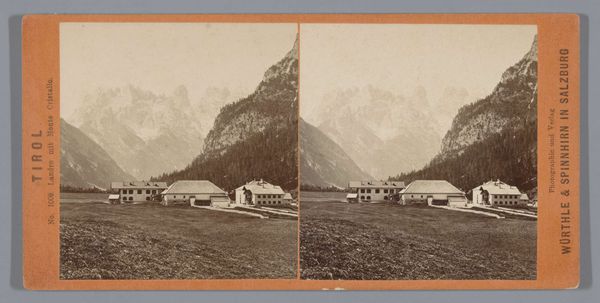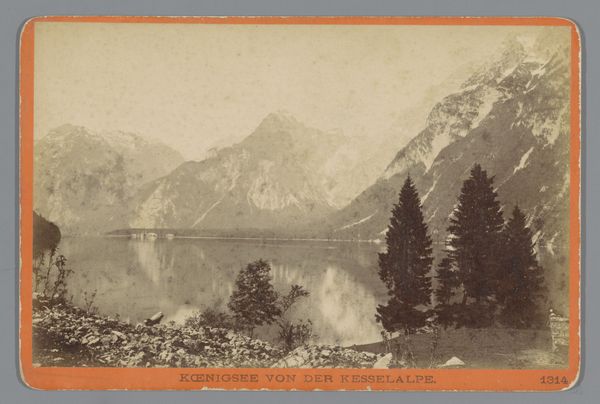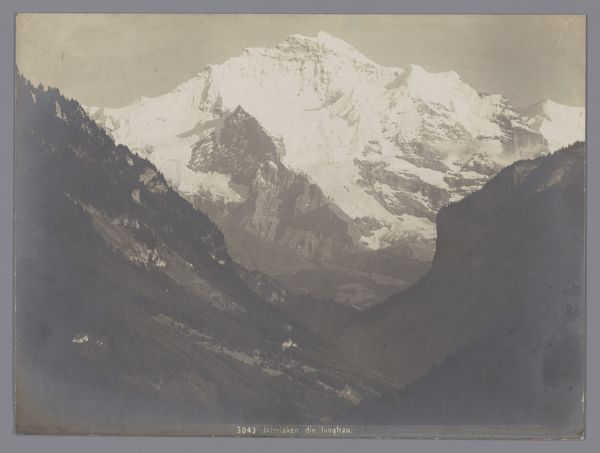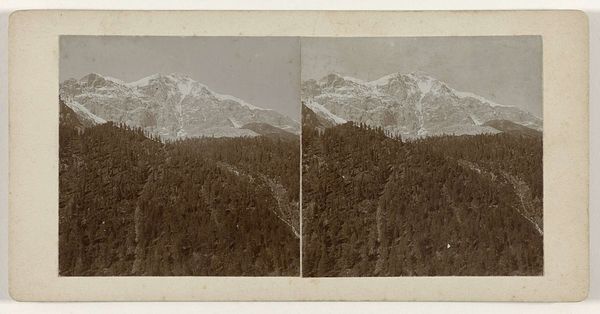
photography
#
still-life-photography
#
pictorialism
#
landscape
#
photography
Dimensions: height 83 mm, width 114 mm
Copyright: Rijks Museum: Open Domain
Curator: This photographic print, taken by J. Dearden Holmes between 1924 and 1926, depicts Cathedral Mountain in the Canadian Rockies. It’s a striking example of pictorialism in landscape photography. Editor: My first impression is its quietness. The subdued tones and the soft focus lend the whole scene a serene, almost ethereal quality. There's a certain stillness in the mountains, emphasized by what looks like two near identical photographs juxtaposed with one another. Curator: Precisely. Pictorialism, as a movement, valued artistic effect over documentary precision. Note how the soft focus, created during development, emphasizes atmospheric conditions. This allows Holmes to subtly manipulate our perception. Editor: Looking at this from a contemporary perspective, it raises questions about land use and the representation of the wilderness. Who gets to define, and ultimately control, these spaces? How does this image romanticize a landscape while potentially obscuring histories of displacement or exploitation tied to resource extraction and tourism? Curator: An interesting point, although this aesthetic really elevated photography in artistic circles. Early photography’s reliance on the natural, combined with Holmes’ eye and photographic expertise creates this picturesque image. Notice how it appears that there might be some structures barely seen nestled into the landscape, drawing in notions of man versus nature and perhaps demonstrating nature's own sublime magnitude. Editor: But to whom does the sublime belong? Even then, such visions would inevitably be filtered through a Western lens that shapes the perception and use of natural resources, raising concerns about environmental exploitation, industrial advancement, and settler colonialism’s effects on marginalized peoples. We need to look critically at how nature photography often hides complex socio-political realities. Curator: Still, the technical choices involved are quite fascinating. The gelatin silver process used to create this print enabled mass production, bringing what might have otherwise been only available to an elite class into public circulation. It reflects how the advent of photography facilitated democratization, for artistic means as well as travel to distant places, even though questions regarding distribution and readership need to be considered too. Editor: By recognizing the layered histories embedded within a still, silent scene like this, we challenge ourselves to think beyond a beautiful photograph. I believe it is about acknowledging and addressing ongoing issues of justice, equity, and environmental stewardship, especially in the light of rapid planetary transformation and widespread socio-economic change. Curator: I think this provides us with insights on the interplay of materials, photographic technology, and aesthetic vision during that period, and how artistic interpretation affects the perceived landscape itself.
Comments
No comments
Be the first to comment and join the conversation on the ultimate creative platform.
